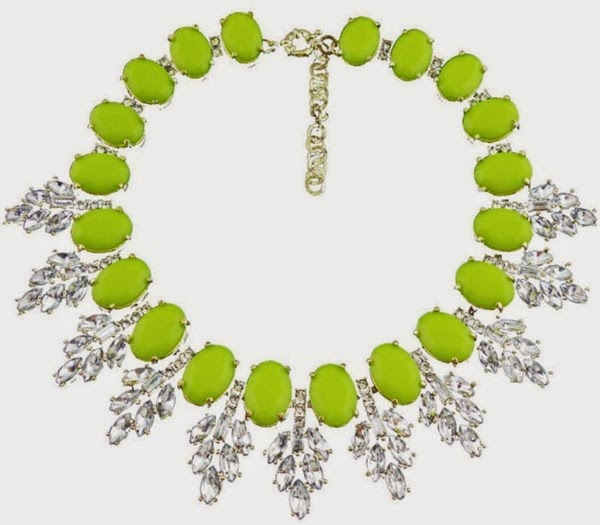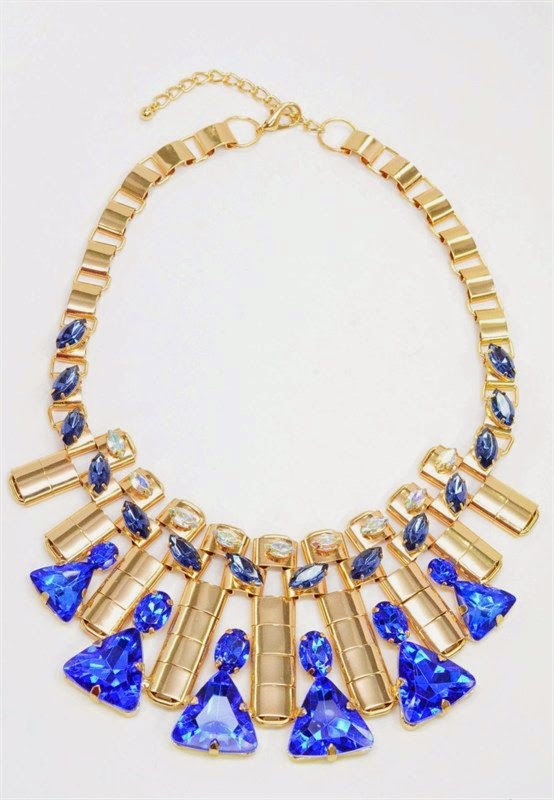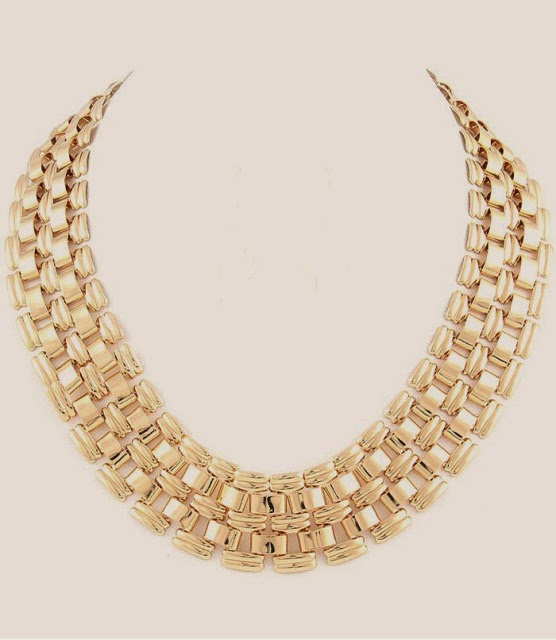Shop Ladiesfashionsense
Wednesday, July 30, 2014
Tuesday, July 29, 2014
The 10 BEST Chokers To Up Jewelry Collection
From modern to embellished ART DECO conversation piece styles, the "IT" Choker jewelry trend had us all choked up. Check out our Editor's top pick chokers to add your wardrobe.
>>>Shop Our Choker Necklaces Collection
Sunday, July 27, 2014
Ladiesfahionsense-How to Do a Self Breast Exam
Image: BestFamilyTraditions.com
According to the National Breast Cancer Foundation , 1 in 8 women will be diagnosed with Breast Cancer in their lifetime .Every year thousands of women are impacted by breast cancer, many resulting in death. As one of the leading causes of death among women, it’s important to do regular self-examinations and undergo annual breast checks to preserve the health of your breasts.
Early detection is critical in treating breast cancer, Regular self-examinations can help you to quickly identify any changes in your breasts, which sometimes include benign or malignant cancers.So adult women of all ages are encouraged to conduct self-examinations once every month. Conducting these exams regularly helps you familiarize yourself with the look and feel of your breasts so that you can more easily detect changes.
Here are some important facts about breast cancer, courtesy of the National Breast Cancer Foundation.
* Breast cancer is a disease that forms in breast tissue, which can be treated very successfully with early detection.
* One in eight women will be diagnosed in their lifetime.
* It's the cancer most diagnosed in women.
* It's the second leading cause of death amongst women.
* Breast cancer in men is possible, though very rare.
* Approximately 220,000 women in the USA will be diagnosed per year, of which 40,000 will die.
* In recent years, a decrease in breast cancer in women older than 50 has been seen, due to hormone replacement therapy after menopause.
* Not all lumps in the breasts are actually cancer.
* Mammograms can't spread breast cancer.
Breast cancer is very treatable and with early detection, your chance of survival is MASSIVE. Women who are treated have a pretty normal life most of the time.
* One in eight women will be diagnosed in their lifetime.
* It's the cancer most diagnosed in women.
* It's the second leading cause of death amongst women.
* Breast cancer in men is possible, though very rare.
* Approximately 220,000 women in the USA will be diagnosed per year, of which 40,000 will die.
* In recent years, a decrease in breast cancer in women older than 50 has been seen, due to hormone replacement therapy after menopause.
* Not all lumps in the breasts are actually cancer.
* Mammograms can't spread breast cancer.
Breast cancer is very treatable and with early detection, your chance of survival is MASSIVE. Women who are treated have a pretty normal life most of the time.
Breast self-exams should be performed in 3 different ways – in front of a mirror, in the shower, and lying down.Read this article to learn How to Do a Self Breast Exam.
1. Visual Examination in Front of a Mirror
Stand in front of a mirror with your shirt and bra off. Be sure that you are in a well-lit area and that you can clearly see your entire chest area.
Visually inspect your breasts with your arms at your sides. Look for the following things: changes in the contour of the breasts, unusual swelling, dimpling of the skin, or changes in the shape of the nipple.
Raise both of your arms over your head. Again, look for any changes in breast contour, swelling, dimpling of the skin, or changes in the shape of the nipple.
Bring your arms back down to your sides. Press your palms firmly on your hips to flex your chest muscles. Look for any dimpling, puckering, or other unusual changes in the appearance of your breasts.
Report any changes to your healthcare provider. Report any visual changes you notice to your healthcare provider so that he or she can conduct a proper examination.
2. In the Shower
Lift your right arm over your head and use your left hand to examine your right breast. Use the pads of your fingers to feel around the entire breast area in circular motions. Feel for any lump, thickening, or hardened knot.
- Breast tissue extends from the nipple to underneath the armpit. Be sure to check the entire area of your breast, including the armpits and along the sides of your breast.
Bring your arm back down, and repeat the examination on your left breast. Again, move your fingers in circular motions and feel for lumps, knots, or thickening.
Report any changes to your healthcare provider. If you feel an unusual lump or knot in your breast, then let your healthcare provider know immediately so that he or she can conduct a proper examination. Do not wait.
3. Lying Down
Lie down on your back with a pillow or towel underneath your right shoulder.Rest your right arm behind your head.
Use your left hand to gently feel the entire breast area in small circular motions. Be sure to feel the sides of your breasts and right armpit area as well. Feel for any lumps, thickening, or knots.
- Use light, medium, and hard pressure.
Squeeze your nipple gently with your left hand. Check for any discharge or lumps in the nipple.
Repeat the examination on the left breast. Again, use small circular motions to check the left breast for lumps, thickening, knots, or discharge.
Report any changes to your doctor. If you find any unusual lumps, thickening, knots, or discharge, then make an appointment with your healthcare provider immediately so that he or she can conduct a proper examination.
Women Age 20 to their late 30’s:
While women in their twenty’s to late thirty’s can suffer from breast cancer, the likelihood is very low. Only 5% of breast cancer cases are attributed to women under the age of 40. Women thirty-nine years old and younger should do monthly breast self-examinations. The examinations should be done the day after your monthly menstrual cycle ends.
To effectively conduct the self-examination, individuals should familiarize themselves with the size, shape and texture of their breast, as doing so will help them to identify any abnormalities. Women with a family history of breast cancer should be especially cautious as having a family history of breast cancer greatly increases your risk for this disease.
Women Age 40 and over:
If you are forty years or older, you should have a clinical breast examination once a year. In addition to this, they should also have an annual mammogram. A mammogram is a soft dosage x-ray machine that takes x-ray images depicting your breasts. The images are then printed on x-ray film or on to a computer screen that will be examined by a radiologist.
Considered the best method to identify cancer or other breast abnormalities, mammograms afford a closer look into the existence or non-existence of lumps alterations in your breast tissue or any growth that may have gone undetected while conducting a professional breast examination. Of course, in conjunction with both of these things, women should continue to do regular breast self-examinations from the comfort of their own home.
Women over the age of forty, with a family history of breast cancer are at increased risk for breast cancer. Women who fall into this category should not only have an annual mammogram, but also an ultrasound and/or MRI.
Now, in addition to the knowledge of how we can prevent Breast cancer by understanding the factors that may cause it, here is an illustration that you should know by heart or at least save in your phone so that you have your own guide at all times. - See more at:
Warnings
- Self-exams alone are not sufficient to properly detect breast cancer, and should be combined with regular doctor appointments and mammogram screenings. Remember that mammograms can detect breast cancer before a visible lump can be felt or seen.
- A woman’s breast cancer risk increases with age. Women over the age of 50 are at higher risk for breast cancer than those under 50.
- Breast cancer risk is higher for women who have a history of breast cancer in the family. Having a first-degree relative (mother, sister, or daughter) with breast cancer nearly doubles a woman’s risk.
- Breast cancer occurs in men as well, so men should also conduct these self-screenings. However, breast cancer is 100 times more common in women.
For More Information, Please Visit>>http://www.nationalbreastcancer.org/
READ & SHARE this info with your friends and families.
Stay Healthy Beauties!
Visit Us Anytime at www.Ladiesfashionsense.com
Sources: Healthguru.sg , Wikepedia/Wiki/ Breast Self Exam, Wikihow/Do A Breast Self Exam, National Breast Cancer Org.
Saturday, July 26, 2014
Thursday, July 24, 2014
Saturday, July 19, 2014
Ladiesfashionsense Shop Trends-Woven
Labels:
accessories,
animal handbags,
bags,
belts,
bib statement necklace,
clothing,
clutches,
envelope clutch bags,
fashion,
gioielli,
handbags,
jewelry,
necklaces,
polyvore,
purple purse,
statement necklace,
suede handbags,
suede purse,
summer necklace,
tops
Subscribe to:
Comments (Atom)

















